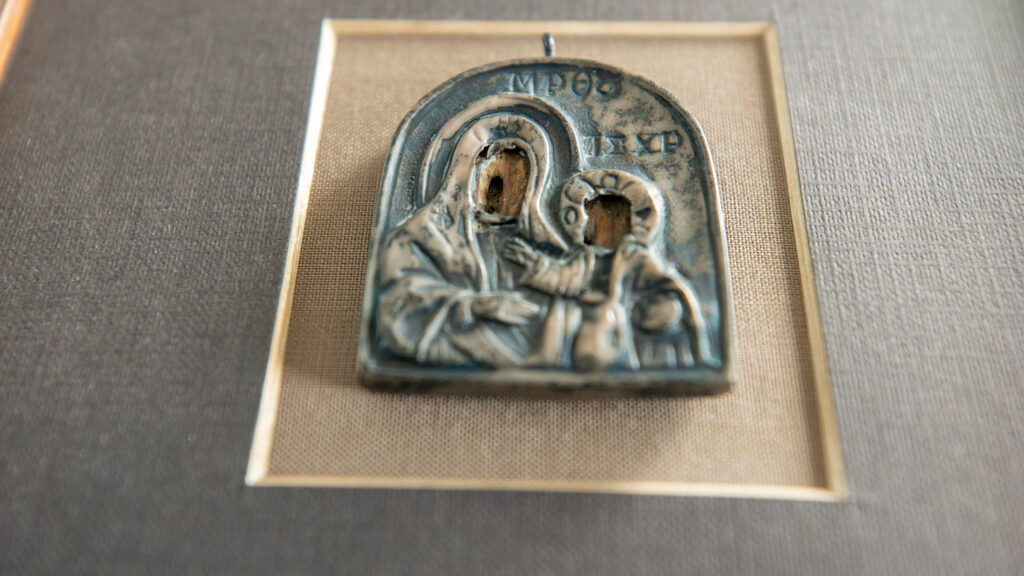
In 1944, Kassiani Kalamakidou married Spyros Vafeiadis, a doctor hailing from Constantinople. The couple had four children. When Kassiani gave birth to her second daughter, Eri (Ermofili), her mother gave her a small icon of the Virgin Mary as Liberator. The icon was a gift to celebrate Kassiani’s birth in Bor in 1922 and was brought over to Greece to protect the little girl.
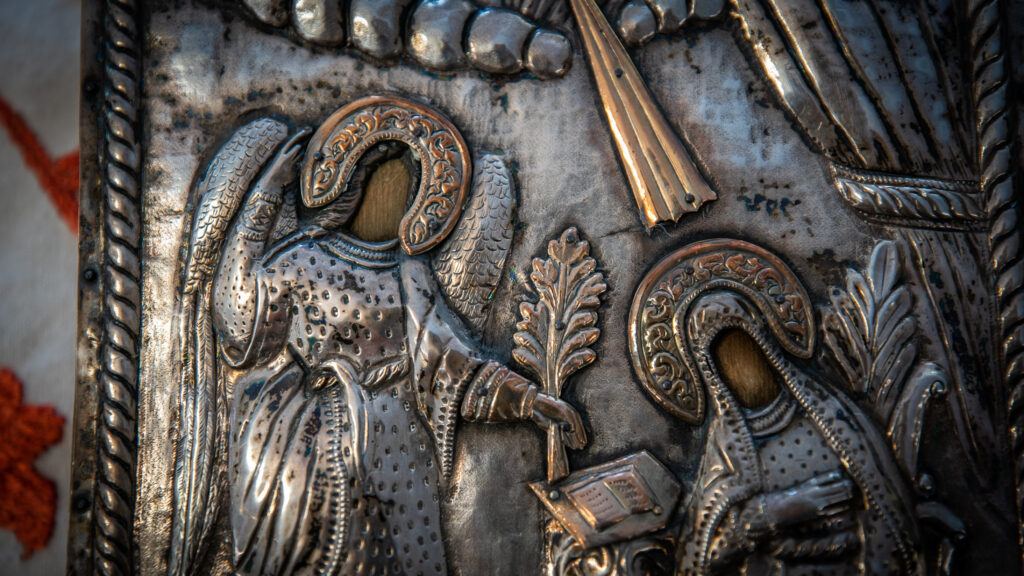
At the end of September, the whole family reached the wooden railway platform at Punta and then boarded a ship to Lesvos. From there, they went to Limnos, the birthplace of Charalambos Tsardanidis. A year later, they arrived in Piraeus, where they stayed for a year behind Evangelistria church, and then moved to Ano Kipseli, with the family finally settling down near Koliatsou Square in 1926. Throughout this long and tumultuous journey, Grandma Koralia and her family were accompanied and protected by the icon of the Annunciation.
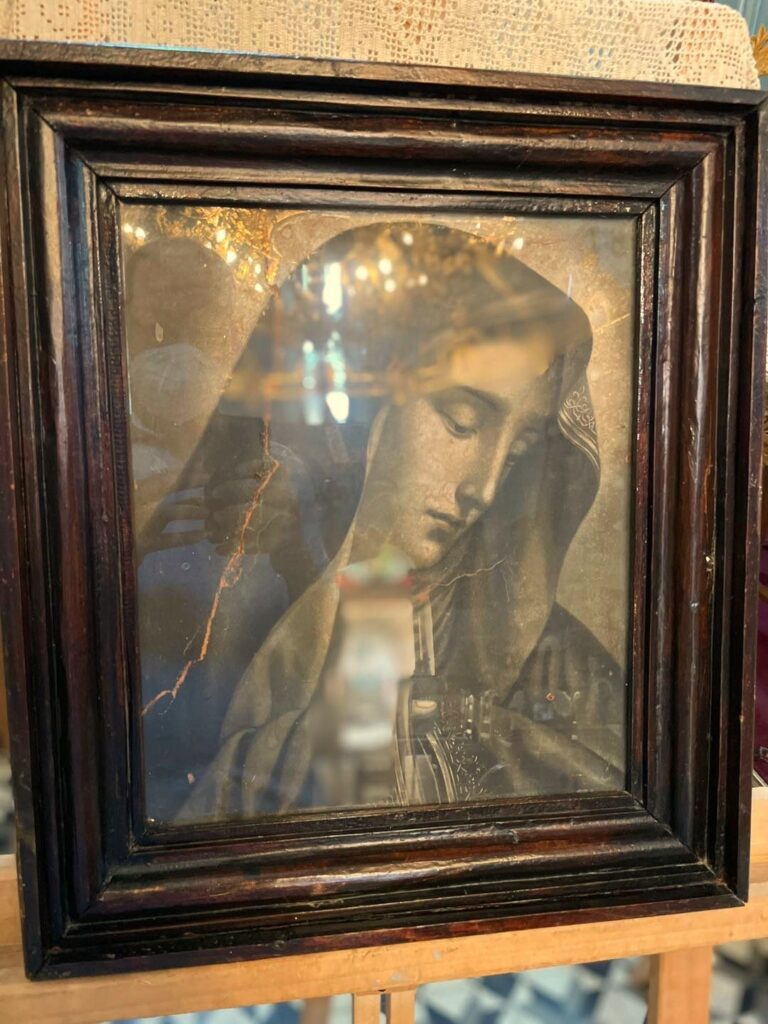
Holding baby Jesus, showing tenderness and mercy, being blessed and full of grace, giving life, mourning, praying; these are just some of the iterations of Virgin Mary, the ‘Mother of God’, in the Orthodox tradition and art. As descendants of refugee families, the members of the ‘Agios Polykarpos’ Brotherhood of Asia Minor Greeks of Chania are responsible for the preservation of the icons their Asia Minor ancestors brought with them.
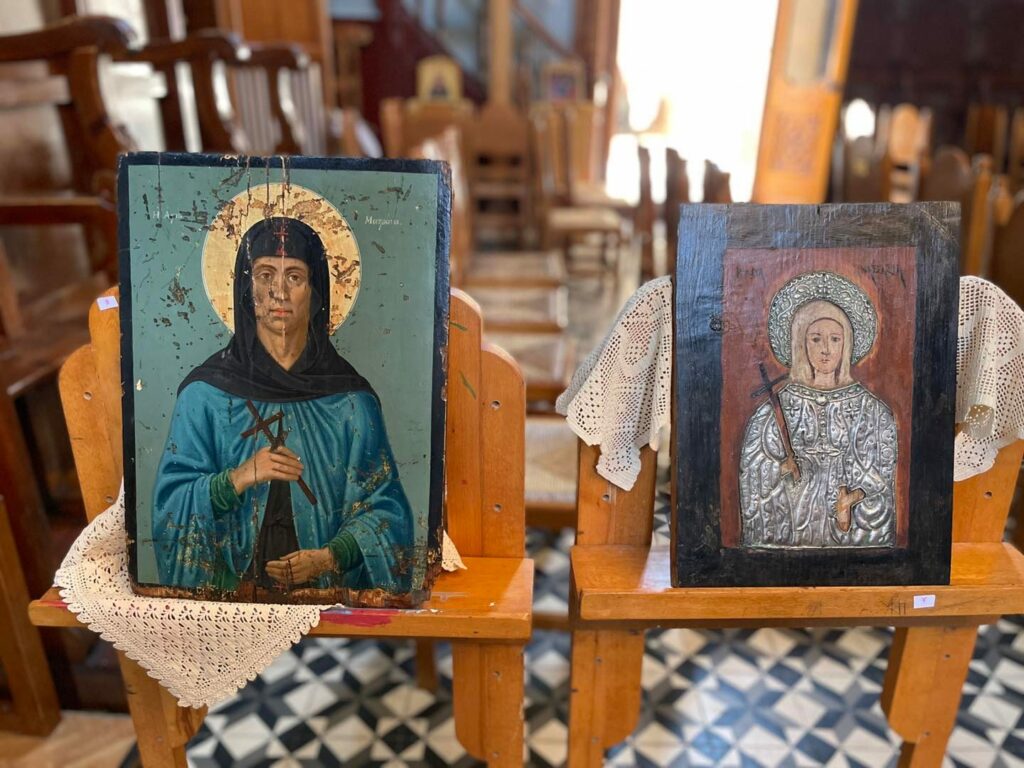
The role of these icons is two-fold according to the Brotherhood. On the one hand, they constitute evidence of the religiosity and piety of the refugees both when they lived in Asia Minor and after they resettled in Greece. On the other, they link refugee descendants to their ancestors’ homelands.
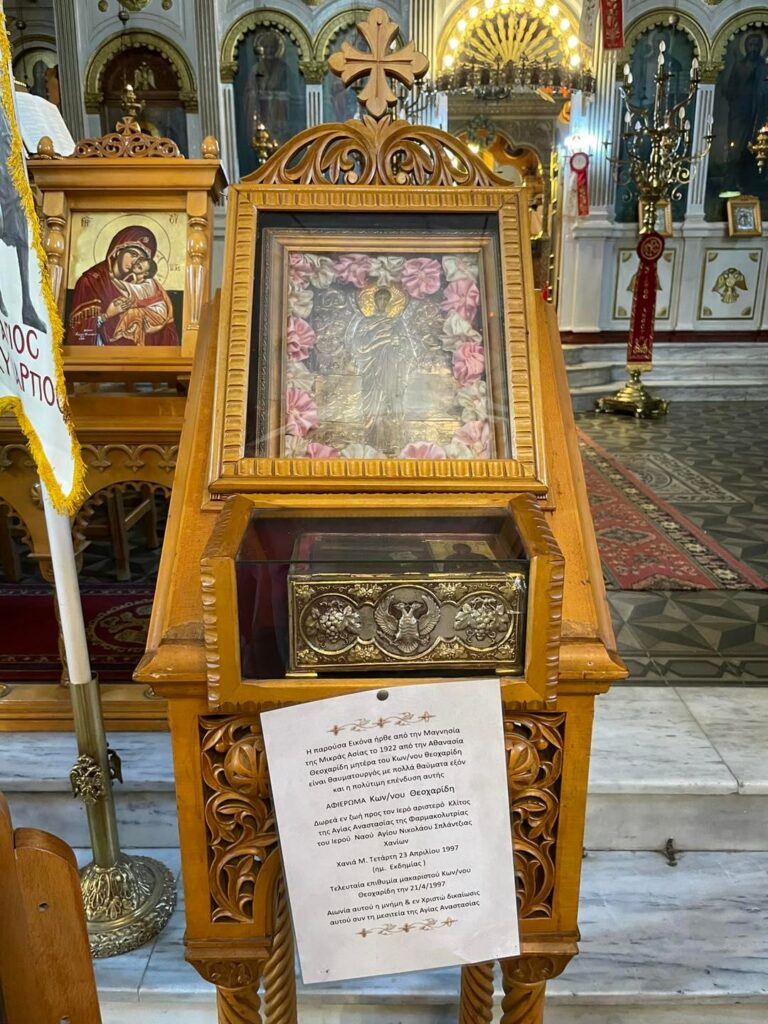
Around 30 icons were transported to the church for this ceremony. Some of them were in good condition, others were more fragile; some depict more obscure saints, others more recognizable ones; some have well-established origins and history, others remain a mystery.
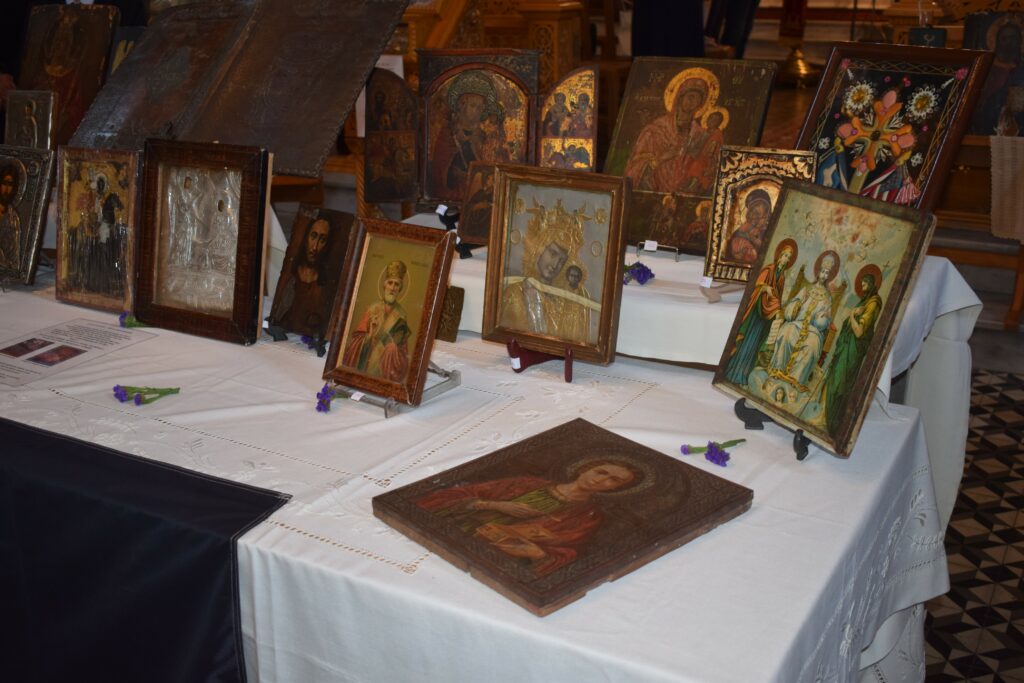
On Saturday, May 28, 2022, the ‘Agios Polykarpos’ Brotherhood of Asia Minor Greeks of Chania commemorated the centenary since the Asia Minor Catastrophe by organising a blessing of the icons that their refugee ancestors had brought with them from their homelands. They chose the church of Agios Nikolaos due to its deep connection with the town’s refugee history. It was the main church of Splantzia, an area which received a large number of refugees since its Muslim residents had already abandoned it, leaving their homes behind.
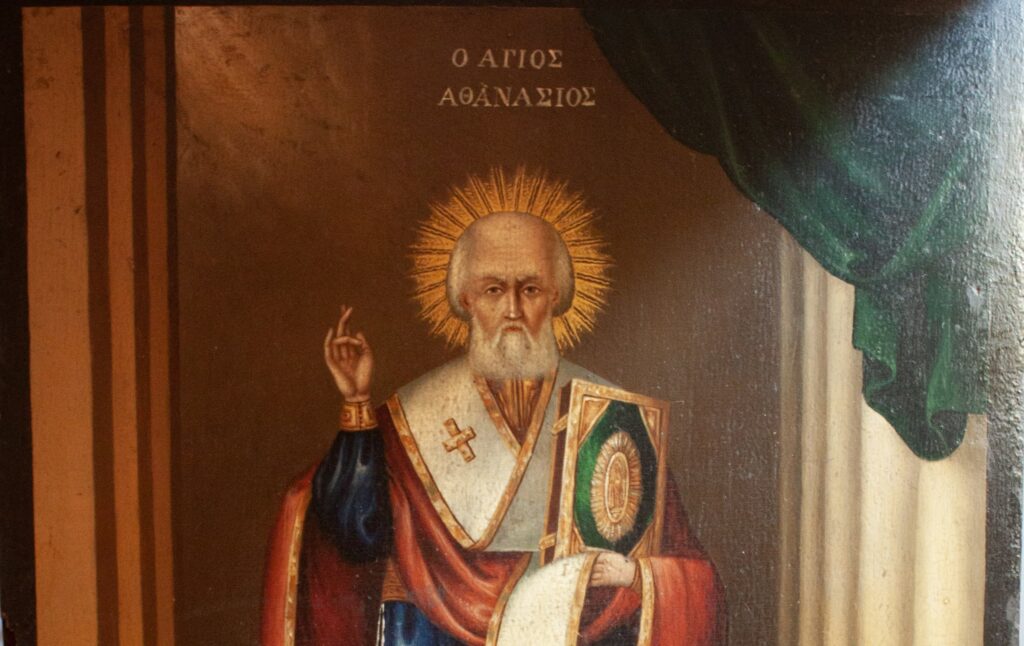
Thanasis Kalafatis owned an icon of Agios Athanasios brought to Greece by his family from Sozopol. The icon is signed ‘Them. Diamantopoulos’ and bears the date ‘1866’. Thanasis always had it in his bedroom.
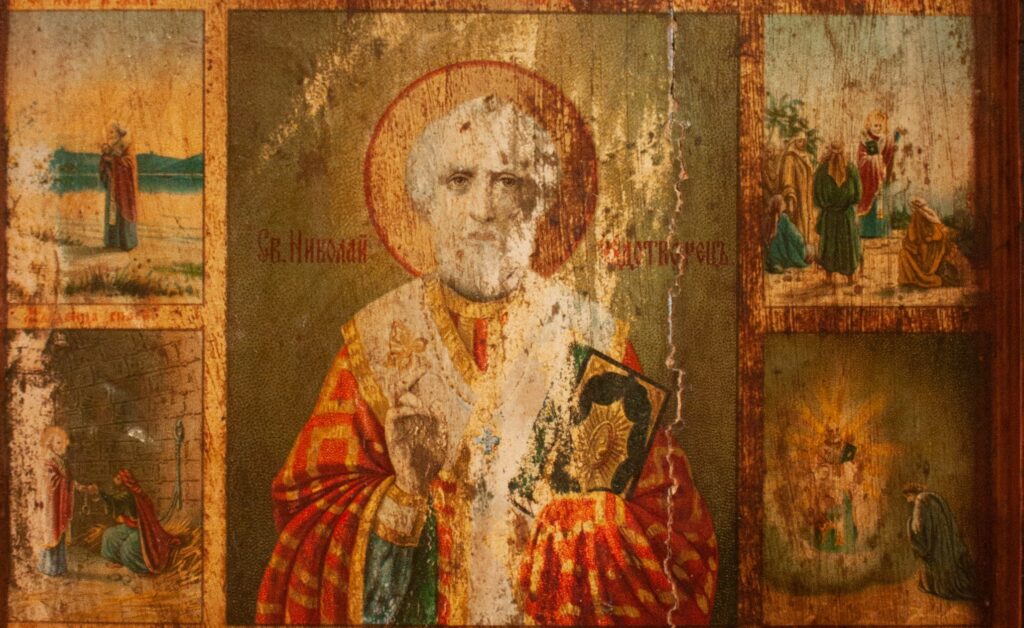
Margarita asked her grandmother to pass the icons on to her when she would no longer need them and Kallino agreed. After her death, Kallino’s three icons stayed with Margarita. The third icon is a relatively newer one, painted in the Russian style and depicting Agios Nikolaos.
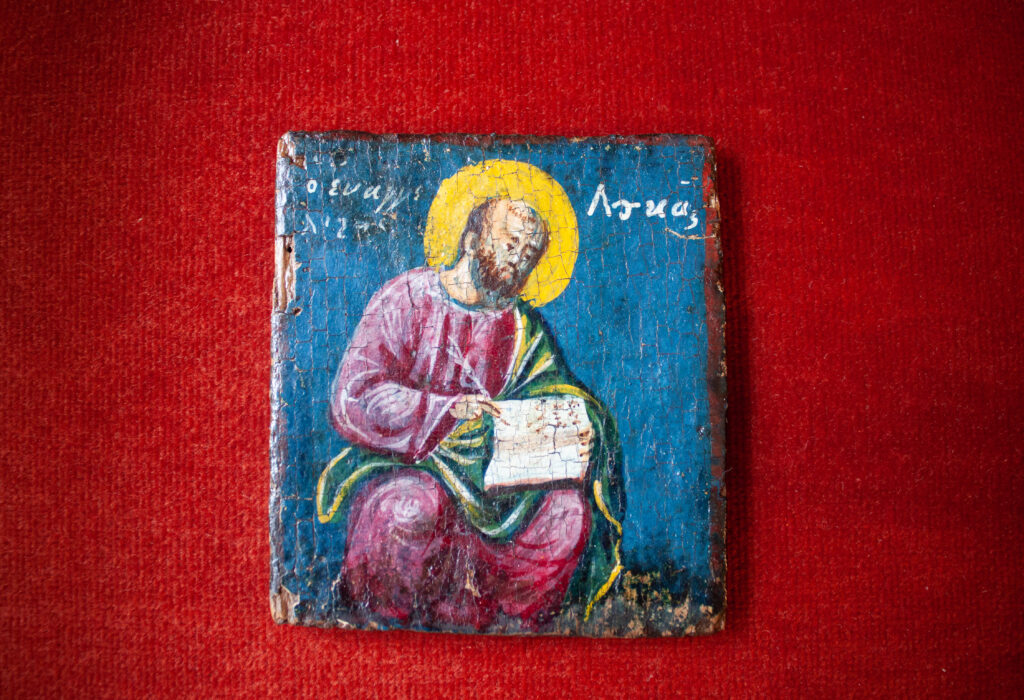
According to family history, Anna Raizopoulou was a particularly pious woman who lived an ascetic life. After 1922, she found herself displaced from Apollonia or Apolloniada, Prusa (today’s Gölyazi, Bursa) to Thessaloniki. Anna managed to bring several icons with her.
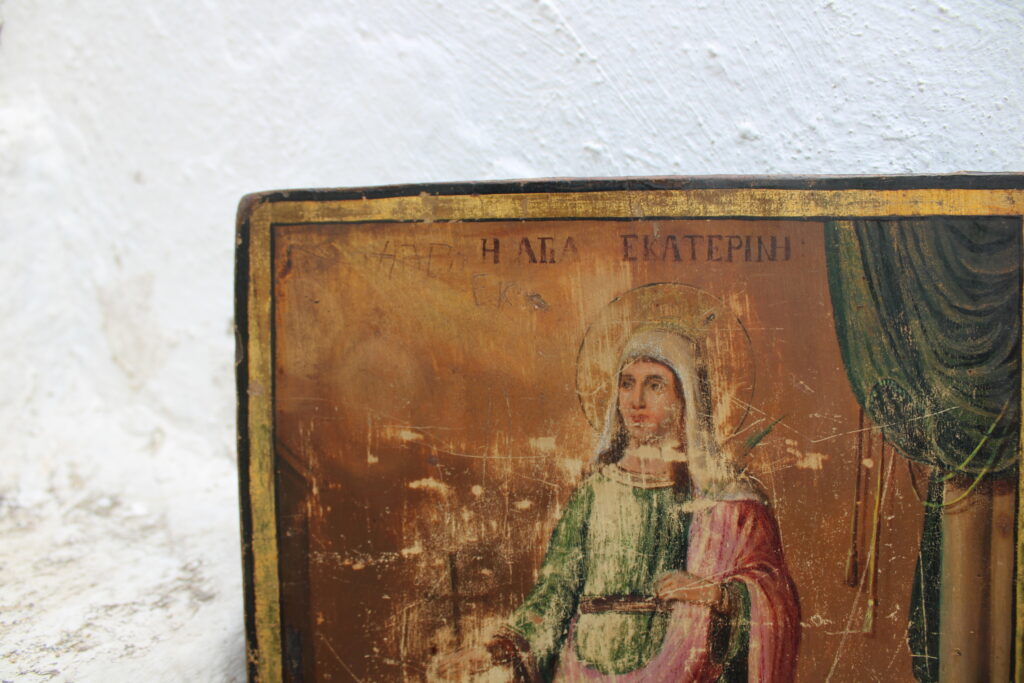
Christina Pavlioglou doesn’t know much about the icon, but remembers that her mother thought it could perform miracles and there was a vague family legend about it surviving a house fire. For Christina, her family’s refugee past is not only part of her own history, but also part of the wider history of mobility and the pattern of hardship and violence that displaced people have always had to contend with. �









